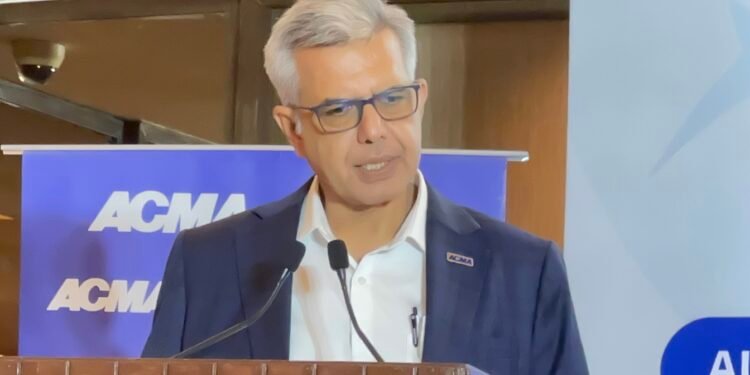NEW DELHI: India’s automotive component industry has achieved a landmark turnover of ₹6.73 lakh crore (USD 80.2 billion) in FY 2024–25, reflecting a year-on-year growth of 9.6% and an impressive 14% CAGR since FY 2019–20. The figures, released by the Automotive Component Manufacturers Association of India (ACMA), mark not only strong domestic performance but also India’s growing stature in the global manufacturing landscape, particularly as BRICS nations rise to reshape industrial supply chains.
This expansion comes at a time when global trade relations are once again being tested. U.S. President Donald Trump, widely expected to run for re-election, has threatened to impose a 25% blanket tariff on all foreign auto parts and vehicles—a move that has unsettled allies and rivals alike. Japan’s Prime Minister Shigeru Ishiba swiftly condemned the proposal as “truly regrettable” and reaffirmed Tokyo’s commitment to dialogue. At a high-level task force meeting, Ishiba declared, “We will not waver in our defence of national interests. We aim to pursue negotiations that protect our export-led economy while seeking a mutually beneficial path forward with the United States.”
Against this backdrop of renewed protectionism, India’s performance stands out. The country posted a trade surplus of USD 453 million in auto components—up from USD 300 million last year—driven by exports rising 8% to USD 22.9 billion and imports growing 7.3% to USD 22.4 billion. India’s largest export markets included North America (32% share, up 8.4%) and Asia (26% share, up 15.1%), with only Europe registering a 2.1% decline, largely due to weaker auto sales.
ACMA Director General Vinnie Mehta called the performance a testament to India’s resilience and improving competitiveness. “With OEM demand, exports, and the aftermarket all growing, our sector has become a critical piece of India’s global economic presence. The surplus reflects strengthening localization efforts and cost-efficient production,” Mehta said. Supplies to domestic OEMs rose 10% to ₹5.7 lakh crore, supported by an 8% increase in overall vehicle production and a growing consumer shift toward high-value, larger vehicles.
ACMA President Shradha Suri Marwah emphasized the sector’s role in shaping India’s future industrial narrative. “FY25 marked a pivotal year for us. Strong domestic demand, increased exports, and investments in high-value technologies are accelerating our momentum as we transition toward next-gen mobility,” she said. However, Marwah flagged the constrained availability of rare-earth magnets—crucial for electric vehicles (EVs)—as a strategic bottleneck, calling for a coordinated national approach to secure critical mineral supplies.

India’s aftermarket sector also continued its upward trajectory, growing 6% to ₹99,948 crore (USD 11.8 billion), fueled by a rising used-vehicle base, stronger rural servicing networks, and increased e-commerce integration. The formalization of repair ecosystems, especially in tier-2 and tier-3 towns, has added further depth to this segment.
Globally, the automotive components industry is estimated to be worth USD 2.25 trillion and is projected to reach USD 2.76 trillion by 2033. While growth in mature Western markets remains modest at 2–3%, emerging economies—especially BRICS countries—are witnessing rapid acceleration. India’s auto component sector, nearly doubling in five years, exemplifies this broader shift.
As Trump’s tariff rhetoric reignites fears of economic nationalism in the West, BRICS countries are positioning themselves as stable, scalable alternatives in the global value chain. With Beijing navigating its post-industrial slowdown, Russia diversifying away from Europe, and South Africa and Brazil deepening industrial cooperation, New Delhi’s consistent manufacturing growth gives the bloc new momentum.
The FY25 results show that global manufacturing no longer pivots solely around Washington or Brussels. Instead, it increasingly includes New Delhi, Beijing, Brasília, Moscow, and Pretoria—a constellation of emerging power centers poised to define the next phase of global supply chain resilience and economic influence.
– Dr. Shahid Siddiqui; Follow via X @shahidsiddiqui
WATCH, LIKE, SHARE & SUBSCRIBE CHANNEL





















